
The Ayalon on Yom Kippur, Tel-Aviv-Ramat-Gan, by Roy Boshi
Since reading the announcement of the "Third Literary Competition" in the ESRA MAGAZINE I have been thinking of the many moving and exciting experiences I have had living here in Israel. Perhaps I could write something and share the meaningfulness of some of these experiences. I do enjoy and love Israel and all that it offers. My life has been filled with so many different experiences that it is difficult to choose one as most significant.
But at this moment I do think of several contenders to write about. There is a strong common thread among these; a feeling of connecting to others and being part of a community. My thoughts and feelings turn to Yom Kippur.
I ask myself what makes Yom Kippur here in Israel unique compared to those I have known in other places such as in travels to Italy and Ireland and especially my home town of Rochester, New York. The most obvious difference here is that it is not only a religious holiday but it also involves everyone in the country. Although we may not all be religious to the same degree, there is a common sharing and a tradition in being together.
Most impressive to me is that the country is ‘Quiet’. I write this in bold print although perhaps it should be in soft script like quiet. In Israel, unlike any other place I have lived, the whole population participates. We become a world without cars and their accompanying horns and brakes. Along with this absence of motor vehicles are the many children and adults readying themselves with their bicycles, scooters and so forth. They await the exact moment to begin their easy riding down the streets. Walking down the street to the Bet Knesset, I pass the children and their parents and notice that even the houses are quieter than usual. There is no music or TV or loud voices. It is the beginning of a time of peace and quiet.
I join with others approaching our small neighborhood Bet Knesset. Men and women and children are walking quietly, dressed in traditional white, carrying their prayer books. Unlike my childhood memories, when fashion was held in high regard on the holidays, here in Israel there seems to be less attention to dress. Styles vary; dresses, skirts and blouses, pants and even jeans are worn. Comfort in apparel in the heat is important here. Hats which were so prominent in my childhood are definitely reduced in number. There has even been a change here in recent years with women less concerned about covering their heads even with simple coverings.
Along with the other women I enter the Bet Knesset through the side door while the men enter through the main entrance. Of course, there is a world of difference between the quiet outside world and the inner world of the Bet Knesset. After all this is a house of prayer and prayer here is not silent. There is a hearty chorus of men singing with the Hazan/Rabbi although sometimes it is difficult to know who is leading.
On my side of the dividing curtain the women's singing is less vibrant even though the women are actively joining in. Although I am by history a woman "liberalist," I am not concerned about the separation curtain between the men and women and how we are positioned "off in a corner." That experience itself has less significance for me at this time.
Perhaps it is replaced by the joyful atmosphere here. As I sit quietly, listening and reflecting, I recognize the melodies of my childhood with the soulful rendition of Kol Nidrei. This musical lament is experienced as if it were descending from above. As I continue to listen to the prayers that follow the Kol Nidrei and the next day, I become more aware that the music and chanting on this day of mourning and "repenting" has a special lilt to it. Although written in the usual minor key of Jewish music, the melodies here seem livelier as they are sung by the congregants. I compare this to what I remember from my childhood when the congregation joined in almost shyly and tenuously.
Although I appreciate that my love for music might have developed in my younger years as I listened to the fine tenor of the cantor in my home synagogue and the accompanying choir, the congregation there was much quieter. I remember that occasionally I recognized the melody of a prayer that reminded me of a piece of classical music that I knew.
I could touch memories of my youth and my family, especially of my father who died when I was a teenager. I can hear in my mind's ear his beautiful vibrant voice and his saying the "Al Hahatim" while beating his breast. I proudly tried to "keep up" with him. I love the literary wording of the sins as I reflect on their meaning for me. But here I feel a greater excitement as we reach the end of each passage of the " Al Hahatim " as the congregants become a hearty chorus of strong voices singing together.
Indeed, for me this holiday is filled with beauty as I connect with both my remembered past and the present. I reflect not only on "my sins" but also on my wishes for myself and those close to me.
I have always found it remarkable that as the day continues and people continue their fasting, an upbeat emerges in the singing. The Hazan occasionally becomes more animated and claps his hands to the music while the members of the congregation join in giving it almost the flavor of a "rock concert" although with less vibrancy in the women’s section.
There are also some interesting changes in the women’s section in the congregation in the last few years. These changes reflect what is happening in the community. There are some older women no longer present while others come with their canes and aides. It is delightful to see that there are also more young women accompanied by their children. Their mates are most likely here too on the other side of the curtain.
Towards the end of the afternoon service I glance up at the sky to see if sunset is approaching with the three significant stars. I know that it is almost the moment for that most moving and reverberating of sounds, the blowing of the shofar with its different called rhythms. I always admire the man who at the end of this long day has the strength and ability to complete this task. I have the feeling that the congregants, like myself, are holding their breath while awaiting and then listening to the shofar. I ended my day on a high note, not even feeling the effect of the fasting. I felt fulfilled. During our time together I felt connected to the congregation and the individuals here and even more so at the end of the day as we sang Israeli songs with Hatikvah as the finale.
These last minutes of the day in the Bet Knesset, are very different from those that I remember from my childhood. Here I feel closer to others and as we are singing I have a stronger sense of hope for our country.
I began this writing with thoughts about the unique quality of experiences in Israel. Like with all my undertakings I was not quite sure where this would end up. I wasn’t sure whether or not I could convey through the written word what to me is felt so strongly in the music and sense of fellowship in the Bet Knesset as well as in the country as a whole. Writing this has been helpful in making the experience clearer and fuller.
This short story by Netta Kaplan of Nof Yam was one of the entries in the ESRA MAGAZINE's Literary Competition, “My Israel”.
Netta Kaplan is semi-retired although she continues practicing individual therapy and supervision. She is also quite occupied with her hobby of fiddling with the Tizmoret HaSharon and organizing their children’s concerts. Occasionally too she paints, photographs, travels, writes and enjoys the more full time hobby of cooking. In 1991, she and her husband left Canada where they had lived for some years, to become permanent residents of Israel and they settled in Nof Yam.
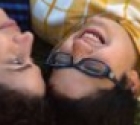 A PLACE OF THEIR OWN
A PLACE OF THEIR OWN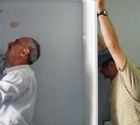 THANK YOU!
THANK YOU! DEAR EDITOR 156
DEAR EDITOR 156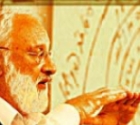 Kabbalah For All
Kabbalah For All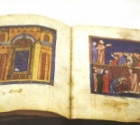 Haggadot
Haggadot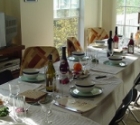 Passover 5767 ...The Holiday of Freedom
Passover 5767 ...The Holiday of Freedom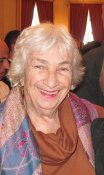 Netta Kaplan
Netta Kaplan